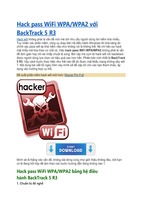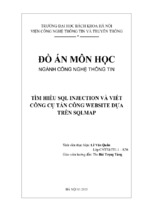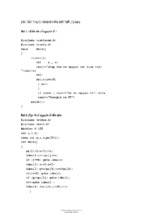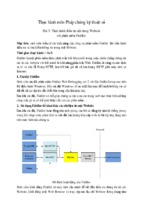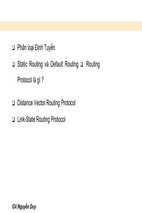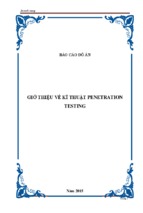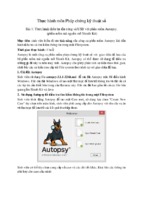Chapter 18
Managing Desktops and
Devices in the Cloud
In This Chapter
▶ Checking out the virtualized desktop
▶ Moving desktops to the cloud
▶ Managing desktops in the cloud
▶ Checking reality
I
n some ways, what goes around comes around. Over the past few years,
the notion of a virtual desktop has been getting a lot of attention. With
a virtual desktop, the PC doesn’t run its own applications — they run on a
server in a data center. Sound sort of familiar? And, as virtualized servers
move into the cloud, the idea of using a virtual desktop is gaining steam. In
this chapter, we examine what a virtual desktop is all about, what it means to
move it into the cloud, and how to manage this environment.
Virtualizing the Desktop
In a virtualized desktop, the applications, data, files, and anything graphic are
separated from the actual desktop and stored on a server in a data center (not
on the individual machine).
Why is it attractive? Think about a PC’s total cost of ownership (TCO): acquisition, maintenance, support, help desk, hardware, software, and power. In
a typical enterprise situation, the annual support cost per PC is anywhere
between three and five times the cost of the PC itself. Because PCs are outdated after about four years, the TCO can be anywhere from 9 to 20 times the
cost of the PC itself.
Virtualizing the desktop can bring down the TCO because it helps manage and
centralize support. Standardizing infrastructure that needs to be managed via
virtualization makes it easier to optimize IT resources.
210
Part IV: Managing the Cloud
Across industries
Virtualization is popular in a number of industries. For example, in healthcare,
clinicians are using a virtualized desktop to gain access to information in
any patient room or office. In science labs, where space is at a premium and
contaminant-free work areas are a priority, virtualized desktops eliminate the
server and other hardware from the room.
Other examples include using virtualized desktops for temporary workers or
remote workers who need access to applications, or even traders who need
to move around the trading floor, but need to gain access to the information
they need, when they need it. Moving the desktop into the data center covers
every possible means of replacing physical PCs with graphics terminals (also
known as thin clients).
The name thin clients comes from the fact that such devices — although
they’re computers with CPUs, memory resources, keyboards, and mice —
aren’t PCs in the sense that they don’t have disks or DVD drives. These devices
also run an operating system, but the OS is used only to emulate the user
interface of a PC. The reality is that thin clients are not always that thin — they
usually have some local memory.
The client desktop
Virtualizing the client desktop can happen four ways, each of which is
described in the following sections:
✓ Session-based computing
✓ Operating-system streaming
✓ Virtual Desktop Infrastructure (VDI)
✓ PC blade
You could loosely describe every one of these techniques as client virtualization,
because in each technique the PC is controlled from the data center (not
from the desktop). In practice, however, only one of these techniques, VDI,
is based on true virtualization, which is the use of software to emulate a computing environment within another computer.
Client virtualization involves emulating a whole PC in software on a data center
server and displaying the user interface on a graphics terminal.
Computers have become powerful enough to do this, and users are unlikely
to detect the difference between client virtualization and a desktop.
Chapter 18: Managing Desktops and Devices in the Cloud
Session-based computing
In session-based computing, the user is really running a session on a server.
The server is running a single instance of the Windows operating system with
multiple sessions. Only the screen image is actually transmitted to the user,
who may have a thin client or possibly an old PC.
Products that provide this capability include Citrix MetaFrame and Microsoft
Terminal Services.
Operating-system streaming
In this approach, the Windows OS software is passed to the client device — but
only as much of the software that’s needed at any point in time. Technically,
this process is called streaming.
Some of the processing occurs on the disk and some in local memory. Thus,
the Windows OS and its applications are split between the client and the
server. Streaming applications run at about the same speed as reading the
application from the disk.
You can use this approach by using PCs on the desktop (diskless PCs and
laptops are options) or by using thin clients. Both Citrix and Hewlett-Packard
provide this capability.
Virtual Desktop Infrastructure
Here, virtual PCs (complete emulations of a PC) are created on the server.
The user has what appears on the server to be a complete PC. The graphics
are being sent to a desktop. Today, most people refer to this kind of client
virtualization as Virtual Desktop Infrastructure (VDI).
VDI is the ability to have shared client sessions on the server rather than on
the client. The software you need to use sits on the server and an image can
be viewed on your device. It is a type of virtualization hosted on the server.
It’s widely used and appropriate in many client environments.
In the VDI model, virtual machines are defined on a back-end infrastructure.
Users connect into their virtual desktop from various clients (thin, PC, mobile,
and so on) through something called a connection broker. The users are really
accessing the image of the desktop. The IT administrator simply makes a
copy of the golden image (server image used as a template) of a desktop and
provisions that to a user.
VMware and Citrix both provide software that delivers this capability.
211
212
Part IV: Managing the Cloud
The PC blade
A server blade is a server computer contained entirely on a single computer
board that can be slotted into a blade cabinet — a purpose-built computer cabinet with a built-in power supply. The server blade can contain a number of
PC blades.
Each user is typically associated with one PC blade — although some environments let multiple users share one PC blade — and a whole PC sits on a
server blade in the data center. Normally, the desktop is a thin client.
You can share a PC blade by putting a hypervisor (a program that enables multiple operating systems to run in conjunction with another operating system)
on the blade. Whether or not you want to do this depends on how much CPU
power you have and what type of applications you are running. For example, if
you have two users who want to share a blade and both are running the same
CPU-intensive application like Photoshop, they may not get the performance
they were hoping for.
Putting Desktops in the Cloud
You get two big advantages to moving desktops to the cloud:
✓ You can create desktops at your own speed. You might first virtualize your
desktops wherever they are, and replace them with thin clients. The
PC blades or VDI servers (or whatever the provider uses to house your
virtual desktops) are located at the provider’s data center. You pay the
provider a fee for this.
The average deployment time for a server in a data center is about five
days. This includes all the setup and provisioning of the server. You might
get five–ten virtual servers from this. If your resources are in the cloud,
and the provider already has the infrastructure and management software
ready for you to set up these desktops, your provisioning (adding capacity at will) time might be five seconds. This means, for example, that you
decide when you want to provision the HR department — you can do it all
at once, or over the course of a month — it is at your own speed.
✓ You can get as many resources as you need for these desktops. And, if
the HR department needs more resources, the cloud provider has them
ready, as well. Say you have offices in New York and Hong Kong: When
the New York office is dark and everyone is asleep, you can use the same
resources for Hong Kong because of the virtualization on the back end.
Moving an image of every desktop into a cloud environment doesn’t make
sense: The hardware and support costs would be astronomical.
Chapter 18: Managing Desktops and Devices in the Cloud
How does this work in the real world? The principle here is economies of
scale. The idea is to move common implementations into a virtualized environment. The golden image — a server image that’s used as a template — of
the OS and common applications and data are housed in the virtualized servers.
For example, it may make sense to move call center applications to this
model. You provide a golden image of the OS and the call center support
applications (and the data) that are used by numerous call center agents.
The agents access this information via their thin clients. The applications
don’t run on their desktops; they run in the cloud. This is a desktop virtualization in the cloud model rather than a SaaS model because of the specific
interface (the thin client), not the mode of accessing the application.
Further pros
The business advantages of desktops in the cloud are the same as in other
forms of PC virtualization, reducing desktop ownership costs and support
efforts in a big way. This approach also has some other advantages:
✓ The upfront investment is very low and transforms most client computing
costs from fixed to variable (from capital to operating expense).
✓ It’s quick to deploy and easy to scale incrementally.
✓ It’s particularly attractive to companies that are running out of data
center space.
Desktop as a Service (DaaS)
How can you deploy and manage these desktops? What is your window into
this process? Recently a new class of services are being referred to Desktop
as a Service or DaaS (not to be confused with Data as a Service, which may
use the same acronym). DaaS removes a layer of complexity associated with
deploying and managing VDI.
The provider takes all the virtualization technology infrastructure and unifies it
with a management front end that enables your IT to provision these desktops
and monitor resource usage. Of course, this idea works as well in a public
cloud as it does in a private cloud.
Two players in this space are Desktone and Virtual Bridges.
213
214
Part IV: Managing the Cloud
Desktone
Desktone (www.desktone.com) offers what it calls the Desktone Virtual-D
Platform, which is a unified desktop virtualization platform. It actually integrates discrete virtualization technology (application, network, and so on)
and allows the whole thing to be managed from a single console.
The platform is two tiered:
✓ Enterprise: The enterprise manages the operating system, applications,
and licensing.
✓ Service provider: The physical data center infrastructure is run by service
providers (or enterprises acting as service providers), using a VDI model.
Desktone’s offering is based on a private cloud that will be owned and run
by service providers (IBM and Verizon are two examples). The approach is
intended to treat the virtual desktop as PCs connected to a service provider
that provides the “virtual container” for the desktops. In essence, the end
customer is responsible for their own operating system and PC application
licenses.
Desktone provides a virtual desktop grid — what it calls an access fabric. This
fabric is a software service that manages desktop virtualization.
Virtual Bridges
Virtual Bridges (www.vbridges.com) was established in 2000 to create VDI
on Linux servers. It offers Virtual Enterprise Remote Desktop Environment
(VERDE), which is a desktop virtualization solution for Linux and Windows
that use VDI.
It recently partnered with IBM and others to offer SMART, a business cloud
computing strategy. This solution runs open standards-based email, word
processing, spreadsheets, unified communication, social networking, and
other software to any laptop, browser, or mobile device from a virtual desktop
login on a Linux-based server configuration. The solutions combines VERDE
with the Ubuntu desktop Linux OS from Canonical (www.canonical.com)
and IBM’s collaboration and productivity software.
What’s the difference between desktop virtualization that runs in your data
center and desktop virtualization that runs in a cloud? The technology is basically the same. However, the data center usually supports lots of workloads
(lots of different applications with lots of different operating systems and
middleware) with different requirements and much less automation. A cloud,
on the other hand, is optimized for more specialized and fewer workloads and
Chapter 18: Managing Desktops and Devices in the Cloud
therefore is easier to automate. Chances are you won’t run an application that
only services 50 people in a cloud environment. Leave that for the data center.
Managing Desktops in the Cloud
From a management perspective, you should understand that cloud desktop virtualization doesn’t remove the need for management at the desktop.
Additionally, you may still need to manage laptops and PCs that can’t be
virtualized, and that task may still place a heavy demand on support.
In terms of managing desktops in the cloud, you need to monitor at least two
key performance indicators (KPIs) regardless of the model you choose:
✓ Annual support costs per device: This metric is preferable to the total
cost of ownership, which includes variable uncontrollable costs such as
software licenses and device purchases.
✓ Availability: This metric, which measures uptime, should be close to
100 percent with virtualized cloud desktops.
You may monitor additional KPIs, depending on your level of maturity in
terms of your current PC management strategy. Of course, companies are at
different levels of maturity when it comes to managing desktops. At one end
of the spectrum, client management is fragmented and reactive; organizations
at the other end have automated client environment management to the
point where PC applications are provisioned and patched automatically, and
the PC environment is centrally controlled.
The reality for most organizations is that the client environment is managed
quite separately from the data center, with a separate support staff. For efficiency reasons — and because the technology to enable it is improving fast —
the management of the two domains will become more integrated in coming
years — especially given this cloud model.
Watching four areas
Even if your desktops move to the cloud, you’re still responsible for keeping
track of your assets, as well as monitoring how your services are running.
Your provider may be allocating disk space and dividing up bandwidth.
Because they’re managing a large resource pool, they’ll also no doubt be
monitoring availability.
215
216
Part IV: Managing the Cloud
In fact, we believe you need to track at least five areas whatever your cloud
model:
✓ Asset management: No matter what the client environment is (cellphone,
BlackBerry, thin client, and so on), activities within that container need
to be registered, monitored, and tracked; based on both the hardware
itself, the software that runs on the platform, and how various groups
use it.
✓ Service monitoring: Activities in this process area monitor what’s happening at each client, as well as the tasks required to maintain the right
level of service. The service desk (see Chapter 17) provides coordination
for monitoring.
✓ Change management: Activities in this process area involve managing
and implementing all changes in applications and hardware. Although
you may often be working off a golden image, this is still important.
A golden image means that every user will have the identical environment. If something goes wrong, an administrator simply gives that user
a new copy of the same image so there is less management needed for
each individual desktop user.
✓ Security: Activities in this process area involve securing the whole client
domain against external threats and authenticating which users can get
into which facilities.
✓ Governance: Cloud services need to be considered in connection with
your governance strategy and your ability to comply with industry and
government regulations (like Sarbanes-Oxley, Health Insurance Portability
and Accountability Act, and Payment Card Industry Security Standards).
For example, desktops in the cloud allow for all types of data to pass
through and be stored. You need a plan to ensure continued compliance
with regulations.
In the next few sections, we examine each of these in detail.
Managing assets
Desktop and device asset management help you select, buy, use, and maintain desktop hardware and software. What must you do to manage desktops
and mobile devices thoroughly? Here’s a list of necessary activities:
✓ Establish a detailed hardware asset register. A register is a database that
itemizes hardware assets and records all the details. It lets you analyze
hardware assets (including peripherals) and provides a foundation for
many user services, including provisioning and security. It also may be
fed with information by asset discovery software.
Chapter 18: Managing Desktops and Devices in the Cloud
✓ Establish a software register. A software register tracks all the software
elements of devices. It complements the hardware register and offers a
foundation for better automated provisioning of software.
✓ Control software licenses. Even if you move your desktops to the cloud
and have common implementations, you must manage the software
licenses. Watching software licenses reduces costs and efforts; it also
eliminates the risk that the company will be running more versions of
software than it has paid for.
✓ Manage device costs. Often, companies have devices that are no longer
used but that still require time and effort to maintain. By tracking
device use, you can reduce redundancies and maintain hardware
more efficiently.
Monitoring services
The support service is driven by the data center’s trouble-ticketing system,
which tracks a problem to its resolution and quickly identifies situations in
which the data center applications are the cause of the problem. We talk a lot
more about monitoring in Chapter 22.
Even if your desktops are running in the cloud, make sure that you can monitor
the following:
✓ Application monitoring: Users are quick to blame IT when the performance of their applications is poor. Poor performance can have a multitude of causes, one of which is simply that the client device doesn’t
have enough power. Consequently, IT must be able to monitor client
device performance based on actual application use.
✓ Service-level maintenance: Service levels should be applied both to
hardware and applications running on client devices. If service levels
aren’t defined accurately, they can’t be monitored effectively. Servicelevel maintenance becomes even more important as organizations
virtualize the client environments.
✓ Automated client backup: An automated backup system reduces the
risk of data loss and speeds recovery times when failures occur.
✓ Remote management and maintenance: Users may be spread around
the country or the globe. Depending what your situation is and what
your service provider is actually providing, find out who’s managing both client related hardware and software and if this can be done
remotely.
217
218
Part IV: Managing the Cloud
✓ Client recovery: Normally, this task involves restoring data from automated backups, but it also can involve reconfiguration or a software
upgrade, depending on the diagnosis. Determine how this will be done.
✓ Root-cause analysis: If your desktops go down, you may want to call
your service provider to see if something happened on their end. There
may be some finger-pointing. On the other hand, many monitoring products place a software agent on the client device to capture the behavior
of the hardware and software in real time. Simply knowing whether a
failure is caused by hardware or software leads to faster recovery. The
more information you can gather about CPU, memory, and application
resource use, the easier it is to diagnose a problem.
Change management
Managing change means that you have to provide standardized processes for
handling IT changes. Although cloud desktop virtualization may minimize the
amount of change that occurs, change remains a fact of life across your
organization.
You should meet these key requirements for handling change management:
✓ Hardware provisioning: Rapid deployment of devices minimizes the
time needed to support staff changes. New staff members have to be
provisioned just as quickly as those leaving the organization.
✓ Software distribution and upgrade: Being able to distribute changed
software to devices across the organization is mandatory in tight financial times. Many companies create a standard desktop client environment that facilitates distributing and changing software.
✓ Patch management: Patches are software changes that fix bugs rather
than upgrade functionality. When well automated, patch management
minimizes the impact of patch implementation while reducing the risk
associated with the bugs being fixed. Many such fixes address IT security problems.
✓ Configuration management: This process lets your company automate
the configuration settings in a desktop software environment, making it
easier to manage the client environment. Specifically, it manages which
applications are loaded and may include IT security settings that provide or deny administrative capabilities. (See the following section.)
Security
Ensuring the security of every user access device in a company can be tough.
We devote all of Chapter 15 to security in the cloud.
Chapter 18: Managing Desktops and Devices in the Cloud
Here are some security approaches to safeguard your access devices:
✓ Secure access control: This approach may involve simple password protection, or it may involve more sophisticated (token-based or biometric)
authentication. Secure access control reduces security breaches.
✓ Identity management: Identity management defines the user in a
global context for the whole corporate network. It makes it possible to
link users directly to applications or even application functions. This
approach delivers networkwide security, associating permissions with
roles or with individual users.
✓ Integrated threat management: Normally, you have to counter a variety
of security threats through several security products, both on the client
and in the data center:
• Virtual private networks secure remote communications lines for
using virtualized desktops from home or from remote offices.
• Intruder-detection systems monitor network traffic to identify
intruders.
• White-listing products limit which programs are allowed to run.
✓ Automated security policy: Ultimately, with the right processes and
technology, you can manage some aspects of IT security to some degree
via policy. Some products manage logging activity so that all network
users’ activities are logged, for example. Also, you can define policies
within identity management software to designate who has the right to
authorize access to particular services or applications.
Getting a Reality Check
We would be remiss if we didn’t point out that not all PCs can be virtualized,
much less moved to the cloud. The reality is that probably no more than 80
percent can be virtualized. Think about your organization.
You may find that about 50 percent of your organization uses the same sets
of applications. These are the low-hanging fruit that could easily be virtualized in a cloud environment.
Maybe another 30 percent of your people use specialized programs: You
might need to determine whether these programs could work in a cloud
environment: Are there enough people using the applications? Can the application be shared on a server? Even if you discover that all these specialized
apps can ultimately be virtualized, that still leaves about 20 percent of applications that don’t fit the virtualization model at all.
219
220
Part IV: Managing the Cloud
Chapter 19
Service Oriented Architecture
and the Cloud
In This Chapter
▶ Understanding service oriented architecture (SOA)
▶ Defining loose coupling
▶ Finding SOA components
▶ Pairing SOA and cloud services
▶ Benefiting from SOA and the cloud
A
cloud has some key characteristics: elasticity, self-service provisioning, standards based interfaces, and pay as you go. This type of functionality has to be engineered into the software. To accomplish this type of
engineering requires that the foundation for the cloud be well designed and
well architected.
What about cloud architecture makes this approach possible? The fact is that
the services and structure behind the cloud should be based on a modular
architectural approach. A modular, component-based architecture enables
flexibility and reuse. A service oriented architecture (SOA) is what lies beneath
this flexibility. In this chapter, we provide an overview of what SOA is and
how it enables the characteristics of the cloud.
Defining Service Oriented Architecture
SOA is much more than a technological approach and methodology for creating
IT systems. It’s also a business approach and methodology. Companies have
used the principles of SOA to deepen the understanding between the business
and IT and to help business adapt to change.
222
Part IV: Managing the Cloud
One of the key benefits of a service oriented approach is that software is
designed to reflect best practices and business processes instead of making the
business operate according to the rigid structure of a technical environment.
Combining the cloud and SOA
Cloud services benefit the business by taking the best practices and business
process focus of SOA to the next level. These benefits apply to both cloud service providers and cloud service users. Cloud service providers need to architect solutions by using a service-oriented approach to deliver services with
the expected levels of elasticity and scalability. Companies that architect and
govern business processes with reusable service-oriented components can
more easily identify which components can be successfully moved to public
and private clouds.
A service oriented architecture (SOA) is a software architecture for building
business applications that implement business processes or services through
a set of loosely coupled, black-box components orchestrated to deliver a welldefined level of service.
This approach lets companies leverage existing assets and create new business services that are consistent, controlled, more easily changed, and more
easily managed. SOA is a business approach to designing efficient IT systems
that support reuse and give the businesses the flexibility to react quickly to
opportunities and threats.
Characterizing SOA
The principal characteristics of SOA are described in more detail here:
✓ SOA is a black-box component architecture. The black box lets you
reuse existing business applications; it simply adds a fairly simple
adapter to them. You don’t need to know every detail of what’s inside
each component; SOA hides the complexity whenever possible.
✓ SOA components are loosely coupled. Software components are loosely
coupled if they’re designed to interact in a standardized way that minimizes dependencies. One loosely coupled component passes data to
another component and makes a request; the second component carries
out the request and, if necessary, passes data back to the first. Each
component offers a small range of simple services to other components.
Chapter 19: Service Oriented Architecture, Loose Coupling, and Federation
A set of loosely coupled components does the same work that software
components in tightly structured applications used to do, but with loose
coupling you can combine and recombine the components in a bunch
of ways. This makes a world of difference in the ability to make changes
easily, accurately, and quickly. (See the next section for more information on loose coupling.)
✓ SOA components are orchestrated to link through business processes
to deliver a well-defined level of service. SOA creates a simple arrangement of components that, together, deliver a very complex business
service. Simultaneously, SOA must provide acceptable service levels.
To that end, the components ensure a dependable service level. Service
level is tied directly to the best practices of conducting business,
commonly referred to as business process management (BPM) — BPM
focuses on effective design of business process and SOA allows IT to
align with business processes.
Loosening Up on Coupling
In traditional software architecture, various software components are often
highly dependent on each other. These software component dependencies
make the process of application change management time consuming and
complex. A change made to one software component may impact lots of
other dependent software components, and if you don’t make all the right
changes, your application (or related applications) may fail. One small change
to an application can make its way through the whole application, wreaking
havoc and leading to massive software code revision.
Loose coupling makes it simpler to put software components together and
pull them apart. Because they aren’t codependent, you can mix and match
components with other component services as needed. This mix-and-match
capability allows you to quickly create new and different applications from
existing software services.
For example, if a credit card–checking service is loosely coupled from an
ecommerce application and you need to change it, you simply replace the old
one with the new one without touching any of the other applications that use
the service.
An important aspect of loose coupling is that the component services and the
plumbing (basic interaction instructions for the pieces) are separated so that
the service itself has no code related to managing the computing environment. Because of this separation, components can come together and act as
if they were a single, tightly coupled application.
223
224
Part IV: Managing the Cloud
If the notion of loose coupling sounds familiar to you, it should. It isn’t unlike
interchangeable parts that sparked the industrial revolution. For example,
many of the early factories used the concept of interchangeable parts to keep
their machines running. When a part failed, they simply replaced it with another
one. Automobile manufacturers have also used this concept. For example, the
same steering column is used in many different car models. Some models may
modify it, but the basic steering column doesn’t change. Because the steering
column was designed to be used in different models, the power steering columns
can be substituted for manual columns without alteration to the rest of the car.
Most car manufacturers don’t view the basic steering mechanism as a significant
differentiator or source of innovation. Likewise, a data service or an email service are not necessarily differentiators, but they may be used to build services
that can help companies do lots of different things.
Making SOA Happen
In this section we highlight some of the key components of a service oriented
architecture.
You can find lots more information on SOA, including the basics, technical
details, and real-life company experiences and best practices in another
book written by our team, Service Oriented Architecture For Dummies, Second
Edition (Wiley).
Figure 19-1 shows the main SOA components:
✓ The Enterprise Service Bus (ESB) makes sure that messages get passed
back and forth between the components of an SOA implementation.
✓ The SOA Registry and Repository have important reference information
about where the SOA business services are located.
✓ The Business Process Orchestration Manager provides the technology
to connect people to people, people to processes, and processes to
processes.
✓ The Service Broker connects services to services, which in the end
enables business processes to flow.
✓ The SOA Service Manager makes sure that the technology underneath the
SOA environment works in a consistent, predictable way.
Each component has a role to play, both independently and with each other.
The goal is to create an environment where all these components work
together to improve the business process flow.
Chapter 19: Service Oriented Architecture, Loose Coupling, and Federation
Business
Process
Layer
Business
Process
Orchestration
Manager
Business
Business
Business
App
App11
App 1
F1
F2
F3
Business
Function 1
Enterprise Service Bus
SOA
Registry
Figure 19-1:
Fundamentals of
SOA
components.
Infrastructure
Services
Service
Broker
SOA Service
Manager
When all these component parts work together and sing the same tune, the
result is dependable service levels. A finely tuned SOA helps guarantee service
levels.
Catching the Enterprise Service Bus
In service oriented architectures, all the different pieces of software talk to
each other by sending messages — a lot of messages. The messages are critical to delivering end-to-end services — delivery from the service provider to
the service consumer. They must be delivered quickly, and their arrival must
be guaranteed. If that doesn’t happen, “end-to-end service” quickly becomes
“lack of service.”
To transport the messages between software components, SOAs typically use
an ESB. The ESB is so important to SOA that some people think that you can’t
have a SOA without one. Other folks think that if you have an ESB, you have
an SOA. Neither statement is accurate. You don’t need an ESB to have an
SOA, but you do need a way for the services to communicate with each other.
The ESB is a reasonable, effective way to accomplish this goal.
225
226
Part IV: Managing the Cloud
The ESB is a collection of software components that manage messaging from
one software component to another. A software component connects to
the ESB and passes it a message by using a specified format along with the
address of the software component that needs to receive the message. The
ESB completes the job, getting the message from the sending component to
the receiving component.
Telling your registry from your repository
The self-contained and reusable software components that you create to carry
out your important business processes are called business services. Business services are often made up of a group of component services, some of which may
also have additional component services. Each service provides a function.
Simply, here’s the difference between the repository and the registry:
✓ Repository: Central reference point for all the components within the
software development environment from which services are built
✓ Registry: Central reference point for definitions, rules, and descriptions
associated with every service within an SOA environment
Registry
Information describing the function of each reusable component is recorded
in the SOA registry — a type of electronic catalog. The SOA registry has two
roles:
✓ One rooted in the operational environment: In the day-to-day working
business computing environment, the SOA registry provides reference
information about software components that are running or available for
use. This information is of particular importance to the service broker —
the software in a SOA framework that brings components together by
using the rules associated with each component.
✓ One rooted in the world of programmers and business analysts: For
programmers and business analysts, on the other hand, the SOA registry
acts as a reference that helps them select components and then connect
them to create composite applications that represent business processes. It also stores information about how each component connects
to other components. In other words, the SOA registry documents the
rules and descriptions associated with every given component.
The SOA registry is extremely important because it acts as the central reference point within a service oriented architecture. The SOA registry contains
information (metadata) about all the components that the SOA supports. For
that reason, it defines the domain of the architecture.
Chapter 19: Service Oriented Architecture, Loose Coupling, and Federation
The SOA registry is where you store definitions and other information about
your software components so developers, business analysts, and even your
customers and business partners can find the services they need. Business
services are published in a registry to make them easier to find and use.
The idea of publishing Web services is critical to SOA. You can only reuse services that are available for reuse, which means they have to be published first.
Repository
Comparatively, the repository is like a central reference point within the
software development environment. It stores the source code and the linking
information used to build all the programs that run in the operational environment. The SOA repository feeds the service oriented architecture with
changes and new components, working within the operational environment.
It is the counterpart of the registry within the development environment.
Cataloging services
It isn’t enough to assemble all the key components and create a central reference point for your business services. You need to plan for managing those
services; otherwise, your SOA implementation won’t meet your expectations.
Service catalogs provide a foundation for good service management.
If you want to create, use, change, or manage a service, then you need access
to documentation about that service. These services may include business
services that represent a company’s important business processes and they
may include a range of IT services such as software services, networking services, communications services, or data services.
Many organizations are creating catalogs of business and IT services. These
catalogs help companies standardize the approach to delivering and managing
services across all units. Some organizations have merged catalogs of different
types of services to improve their ability to manage and govern all the services
delivered to the business.
A service catalog should be dynamic to keep pace with the changing needs
of the business. A sample of the information included in the service catalog
follows:
✓ Whom to contact about a service
✓ Who has authority to change the service
✓ Which critical applications are related to the service
✓ Outages or other incidents related to the service
227
228
Part IV: Managing the Cloud
✓ Information about the relationships among services
✓ Documentation of all agreements between IT and the customer or user
of the service
A banking institution’s service catalog, for example, may have information about
its online banking service, the key performance indicators — measurement indicating the effectiveness of a process — for that service, and the service level
agreements between IT and the online banking business. If an outage occurs,
the bank’s IT service management team can read the service catalog to locate
the root cause of problems with the service.
Understanding Services in the Cloud
When you have some of the background on what it means to take a serviceoriented approach to architecting technology systems, you can begin to see
the relationship between SOA and cloud computing. Services are important for
cloud computing from both an infrastructure and an application perspective.
Service orientation permeates the cloud itself and the cloud serves as an
environment that can host other services (either at technical or business
levels). What does this mean?
✓ On the one hand, cloud providers have built the cloud infrastructure on
well-designed services with clearly defined black-box interfaces. These
black-box services (think capacity, for example) allow the cloud to scale.
The cloud infrastructure itself is service oriented.
✓ On the other hand, companies building applications designed for the
cloud tend to build them out as services; this makes it easier for customers and partners to use them. For example, Software as a Service providers need an ecosystem of partners that provides either complementary
components or full applications that are important to sustaining and
growing their businesses. A service oriented architecture is the only way
partners can economically build on these platforms.
In Part III of this book, we introduce you to the various elements of the cloud
and describe the different cloud models — Infrastructure as a Service (IaaS),
Platform as a Service (PaaS), and Software as a Service (SaaS). We illustrate
how each of these models exhibits some important characteristics, like elasticity and self-service provisioning.
Look at each of these models again so that you can understand why smart
cloud providers are using a services approach.
- Xem thêm -





